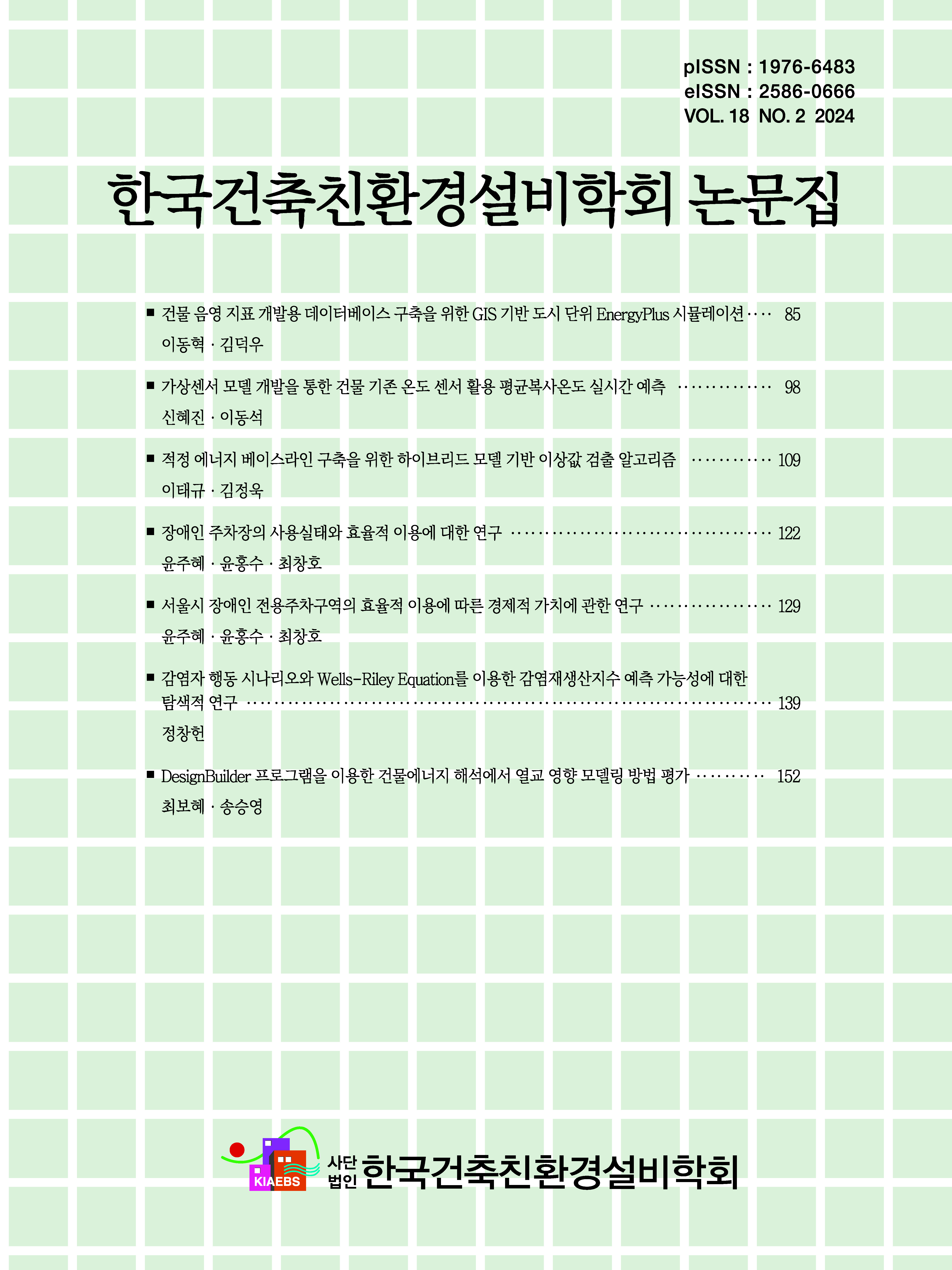Research Article
Abstract
References
Information
- Publisher :Korean Institute of Architectural Sustainable Environment and Building Systems
- Publisher(Ko) :한국건축친환경설비학회
- Journal Title :Journal of Korean Institute of Architectural Sustainable Environment and Building Systems
- Journal Title(Ko) :한국건축친환경설비학회논문집
- Volume : 16
- No :2
- Pages :173-183
- Received Date : 2022-04-06
- Revised Date : 2022-04-27
- Accepted Date : 2022-04-28
- DOI :https://doi.org/10.22696/jkiaebs.20220015




 Journal of Korean Institute of Architectural Sustainable Environment and Building Systems
Journal of Korean Institute of Architectural Sustainable Environment and Building Systems








